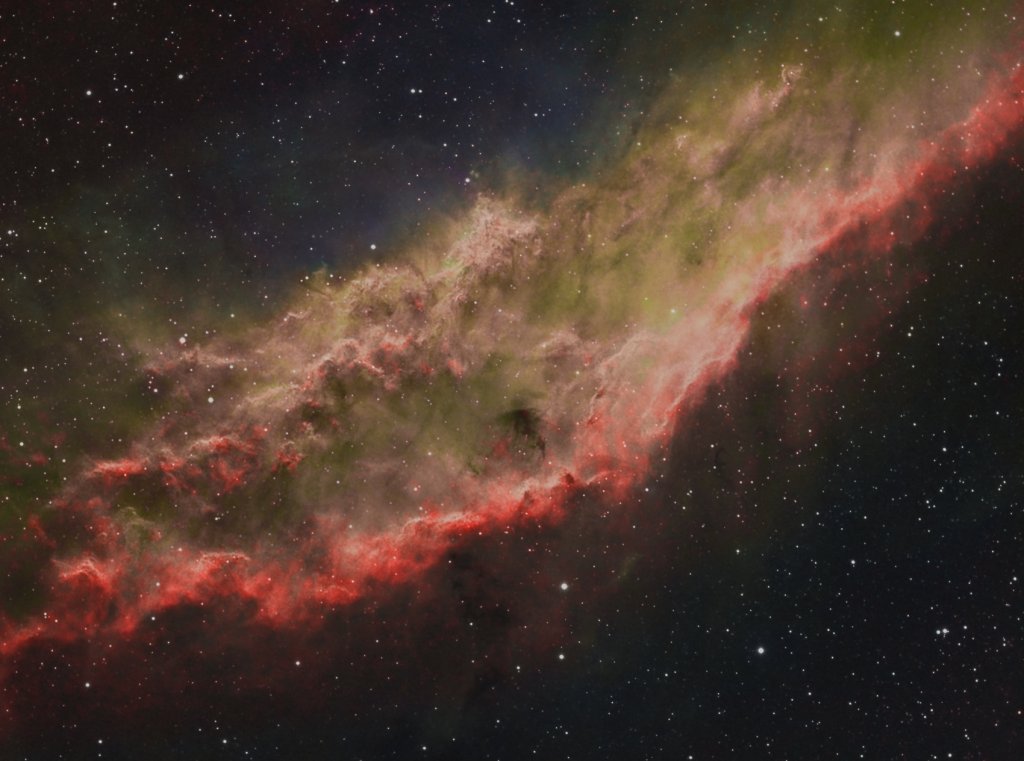
Located some 1,500 light-years from Earth (in the constellation of Perseus or the Orion arm of the Milky Way galaxy) is this; what astronomers call the ‘California nebula‘. We don’t have to explain the origin of the name, as it really does mimic the shape of the state of California in the US — this can be discerned much easier if if you rotate the image by a little more than 90 degrees clockwise. Only it’s much, much larger. This deep space nebula stretches more than 100 light-years across.

The California nebula, also known as NGC 1499, is an emission nebula that is home to a plethora of ionized hydrogen atoms that are stripped away by the ultraviolet radiation beaming from the embedded stars. More specifically, the likely culprit star is a hot, high-mass star on the outer right edge of the image, known as Xi Persei. After the ionized hydrogen atoms relax to a lower energy state, they left behind a reddish glow that surrounds the outer edge of the nebula. The prominent colors are also representative of certain elements, with the hydrogen appearing green, the sulfur mapped to red (to a lesser degree) and the oxygen mapped as blue.